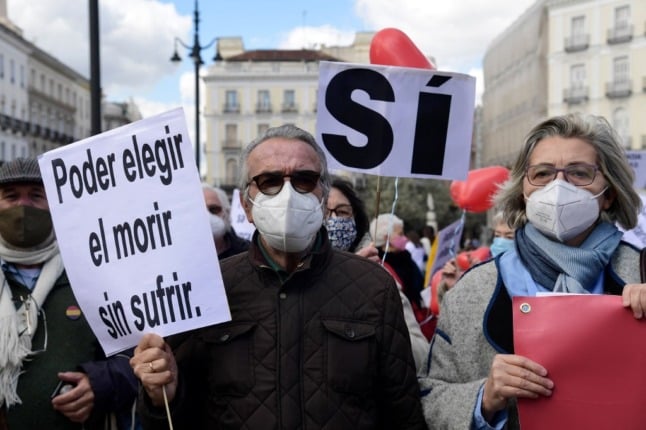The legislation, which was passed by parliament in March, “responds to the existing social demand on the matter” and contains “safeguards” on the implementation of euthanasia, the health ministry said in a statement
Spain is the fourth European nation to decriminalize assisted suicide after the Netherlands, Belgium and Luxembourg.
The law was drafted following public pressure generated by several high-profile cases, notably that of Ramon Sampedro whose plight was immortalized in the Oscar-winning 2004 film “The Sea Inside”.
It permits euthanasia in which medical staff intentionally end a life to relieve suffering, and assisted suicide in which it is the patient who carries out the procedure.
Anyone with a “serious or incurable illness” or a “chronic or incapacitating” condition can now request help dying to avoid “intolerable suffering”.
The patient must be a Spanish national or a legal resident and “fully aware and conscious” when they make the request, which has to be submitted twice in writing, 15 days apart.
A doctor can reject the request if the requirements have not been met. It must be approved by a second medic and by an evaluation body.
Any medic can withdraw on grounds of “conscience” from taking part in the procedure that will be available via Spain’s national health service.
But the legislation has drawn stark opposition from the Catholic Church and from Spain’s political right, with the main opposition Popular Party filing an appeal against the law on Thursday at the Constitutional Court.



 Please whitelist us to continue reading.
Please whitelist us to continue reading.
Member comments